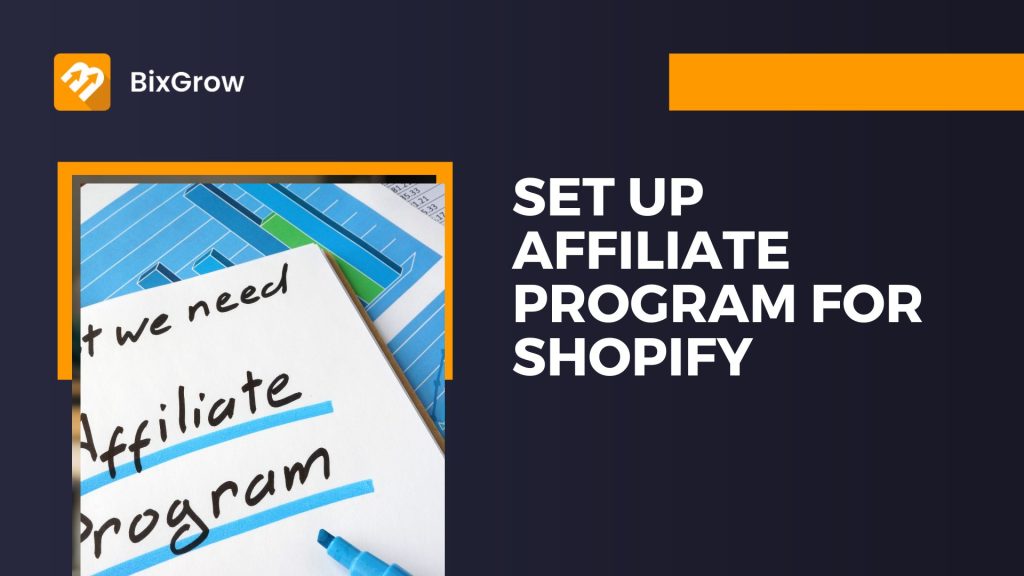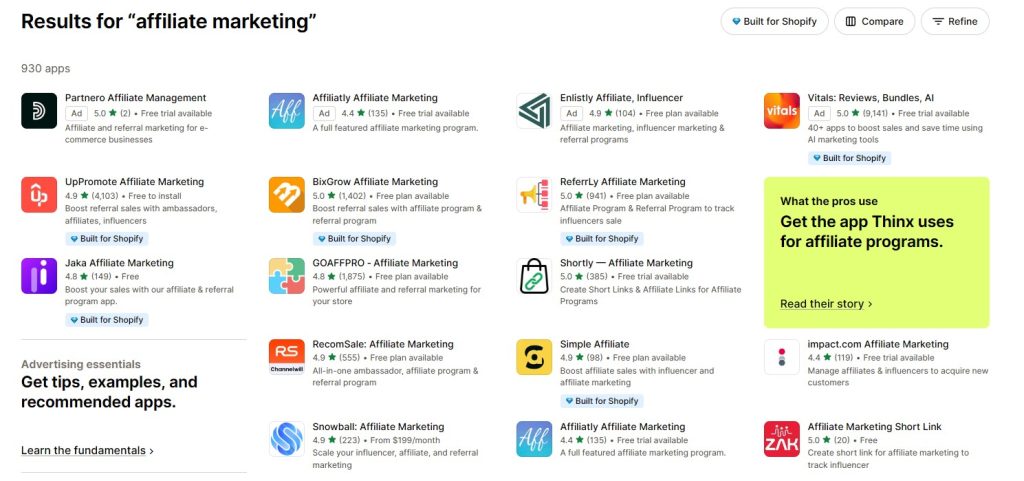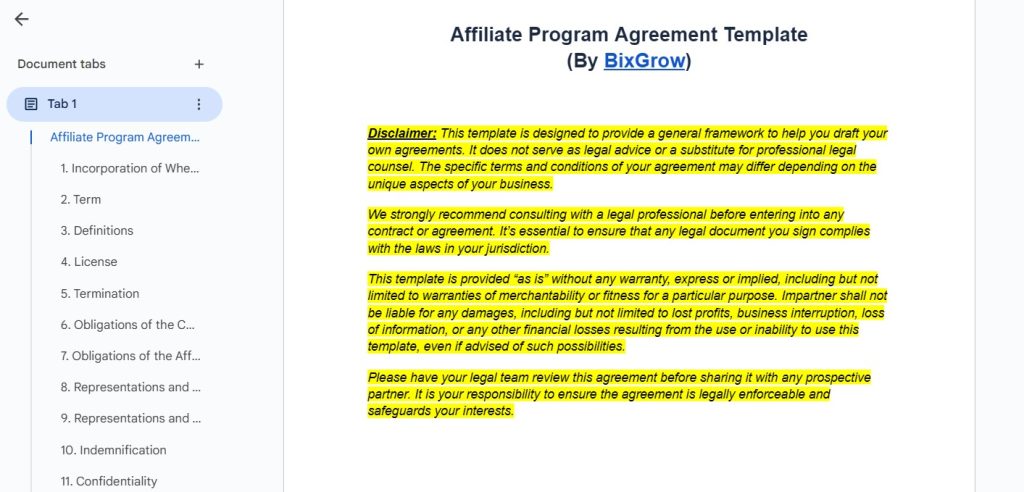With over 2.5 million Shopify stores worldwide, competition is fierce, and traditional marketing methods alone may not be enough to scale effectively. An affiliate program for Shopify store will help tap into influencers, bloggers, and content creators who promote your products to their audiences in exchange for a commission.
This guide will walk you through the essential steps to setting up an affiliate marketing for Shopify!

What is an affiliate program?
An affiliate program is a marketing strategy where businesses partner with individuals (affiliates) who promote their products in exchange for a commission on sales generated through their unique referral links. It operates on a performance-based model, meaning you only pay when an affiliate successfully drives a sale, making it a cost-effective alternative to traditional advertising.
Here’s how it works:
- Sign-up: An affiliate joins the program.
- Promotion: The affiliate promotes the business’s products or services on their website, blog, or social media.
- Tracking: When a customer clicks on the affiliate’s link and makes a purchase, the sale is tracked through cookies or links.
- Earnings: The affiliate earns a commission for their referrals.
Affiliate programs are widely used across industries, and 81% of brands now leverage affiliate marketing as part of their strategy, showing its norm for brands.
The benefits of an affiliate program for Shopify store
For Shopify store owners, an affiliate program can be an excellent way to increase brand awareness, attract new customers, and boost revenue—without requiring a massive upfront marketing budget.
- Cost-effective marketing: Affiliate marketing is a performance-based model, which mean you only have to pay affiliates when they get you sales. A stable affiliate program can result in 14x ROI rate, which mean you get $14 for every $1 spent.
- Brand awareness: Affiliates help promote your Shopify store across multiple platforms, including blogs, social media, YouTube, and email marketing, exposing your brand to new audiences.
- Boosted sales and revenue: Studies show that affiliate marketing accounts for 16% of all eCommerce sales, proving its effectiveness.
- SEO benefits: Many affiliates promote products through blog content and product reviews, which generate valuable backlinks to your store. This can improve your Shopify store’s search engine rankings over time.
Shopify store owners can benefits from affiliate marketing. It is an into sustainable, long-term growth driver require no heavy advertising costs. The next step is setting up the right structure for your program that attracts affiliates & drive sales.
Step-by-step guide to set up an affiliate program for Shopify
Setting up an affiliate program for your Shopify store requires careful planning and execution. Here’s a step-by-step guide to ensure its success.
1. Choose the affiliate marketing app

The first step to build an affiliate program is choosing the right affiliate app on Shopify app store. Shopify doesn’t have a built-in affiliate system, so you’ll need a third-party app to manage tracking, payouts, and affiliate sign-ups. Here are three top-rated affiliate apps that have good ratings and useful features:
- BixGrow: While BixGrow is much more affordable than other apps, it is still fit to SMEs and thriving business. It is feature-rich app that supports multi-tier commissions, automated payouts, and customizable dashboards.
- Simple Affiliate: As its name, this app is simple yet effective. Suitable for brands looking to execute a basic affiliate program.
- Uppromote Shopify: Known for its ease of use, UpPromote offers automated tracking links, coupon codes, and an affiliate marketplace to recruit partners easily.
When choosing an affiliate app, consider factors like pricing, ease of use, integration with your existing tools, and whether it offers features such as coupon tracking and automated payments.
2. Set the commission structure
Your commission model plays a key role in attracting affiliates and keeping them motivated. Here are some common structures:
- Flat-rate commissions: A fixed dollar amount per sale. This works well for stores selling high-ticket products where a percentage-based commission may be too high.
- Percentage-based commissions: The most common structure, where affiliates earn a percentage of each sale they drive. Typical Shopify stores offer 5%-30%, depending on profit margins.
The above two are the most easy ways to set up affiliate commission. You can also explore the more complicated options, like Tiered commissions – which means the better an affiliate perform, the higher commission they get. For example, 5% for affiliates generating under $1,000 in monthly sales; 10% for affiliates generating $1,000 – $5,000 and 15% for affiliates generating over $5,000. You can also think of supporting commission options like discounts or credits if your margins are low.
Commission structure calculation can be very complicated if you are looking to maximizing profit. However, we suggest SMEs and startups to apply simple commission structures as it will reduce a lot of management efforts.
3. Create affiliate guidelines and contract
To maintain professionalism and prevent issues like fraud or unauthorized promotions, set clear rules and expectations through an affiliate agreement and program guidelines. You can have a check at our template.

Your affiliate agreement should include the following main points:
- Commission eligibility: Define when and how commissions are earned. Are there minimum sales thresholds? What happens if a customer requests a refund?
- Payment terms: Specify payout frequency (weekly, monthly, etc.) and payment methods (PayPal, bank transfer, store credit).
- Promotion restrictions: Outline what marketing methods are allowed (e.g., social media, blogs) and prohibited (e.g., bidding on your brand name in Google Ads).
- Content usage rules: State whether affiliates can use your brand name, logo, and product images in their promotions.
Consider creating an FAQ section or onboarding guide to help new affiliates understand the program easily.
After setting up the program, you can learn how to create Shopify affiliate links here.
4. Create an Affiliate Signup Page
Creating an Affiliate Signup Page is crucial for attracting affiliates and streamlining the process for them to join your program. Here’s how to create an effective and user-friendly signup page:
- Clear and Compelling Headline: something like “Join Our Affiliate Program and Start Earning Today!”
- Explain the Program Benefits: including commission structure, rewards and supports you have
- Simple Signup Form: including Name, Email, places where they will promote your products (Website/Blog/Social Media info), payment Preferences (PayPal, Bank Transfer, etc.)
- FAQ Section
- Link to your brand guideline: you can keep it public or not. It depends on your strategy.
Luckily, most affiliate apps offer pre-designs template of affiliate sig-up portal. All you need to do is to add your brand messages!
5. Provide affiliate marketing assets
Affiliate marketing assets are tools, materials, and resources that affiliates use to promote your product Equipping affiliates with high-quality marketing materials increases their chances of success. Provide them with:
- Custom tracking links & coupon codes: Many Shopify affiliate apps generate these automatically. Affiliate can sign-up to the app and get the auto-gen affiliate links.
- Banners, images, videos: High-quality, ready-to-use graphics for Facebook, Instagram, Pinterest, etc.
- Product descriptions & ad copy: Well-crafted marketing copy they can use in blog posts, ads, and promotions.
- Promotion guide:
That is the basic. We have a list for details marketing to follow here.
6. Recruit affiliates
Finding the right affiliates is crucial for success. Here’s where to look:
- Marketplace: Look for content creators in your niche who already promote similar products. Use influencer marketplace like Upfluence to actively find potential partners. Reach out via email or DMs.
- Existing customers: Your current customers already love your brand, so why not turn them into affiliates? Offer an exclusive referral program for customers, rewarding them for sharing your products. Use email marketing to invite loyal customers to join your affiliate program. You can set up referral program for this.
- Affiliate networks: Listing your program on platforms like BixGrow or ShareASale can help attract professional affiliates. Some networks charge fees, but they give you access to thousands of experienced marketers.
- Niche communities & Facebook groups: Join Facebook groups, Reddit forums, and LinkedIn communities related to your industry. Engage with potential affiliates before pitching your program.
Explore more than 10 ways you can recruit affiliates!
7. Maintain relationships with partners
Affiliate marketing is not a “set it and forget it” strategy. Keep your affiliates engaged and motivated by:
- Regular check-ins: Send updates on program changes, promotions, and performance insights.
- Exclusive perks: Reward top affiliates with higher commissions, early access to new products, or bonus incentives.
- Affiliate newsletters: Keep them informed with tips, sales strategies, and upcoming product launches.
- Dedicated support: Create a support channel (email, Slack, or Discord) where affiliates can ask questions and share feedback.
A strong relationship with affiliates means they’ll be more committed to promoting your store long-term.
8. Optimize the program
After launching your program, track performance metrics and make improvements where needed. Key metrics to monitor include:
- Conversion rate: How many affiliate-driven visitors are converting into paying customers?
- Top-performing affiliates: Identify your best affiliates and find ways to help them succeed even more.
- Customer lifetime value (LTV): Are affiliate-referred customers sticking around and making repeat purchases?
- Return on investment (ROI): Calculate how much revenue you generate for every dollar paid in affiliate commissions.
If your program isn’t performing well, consider:
- Adjusting commission rates: Increase commissions for high-value affiliates.
- Offering limited-time bonuses: Run short-term incentive programs to boost engagement.
- Expanding your affiliate pool: Recruit new affiliates through outreach campaigns.
By choosing the right Shopify affiliate app, setting a competitive commission structure, providing high-quality marketing assets, and building strong affiliate relationships, you can create a thriving program that drives continuous sales growth.
Affiliate marketing is one of the most cost-effective ways to scale your Shopify store, so take the time to optimize your program regularly and support your affiliates to achieve long-term success.
FAQs about setting up an affiliate program for Shopify
1. Does Shopify take a commission from affiliate referrals?
2. Does Shopify receive information about my affiliate campaigns?
3. What happens if I use multiple affiliate marketing apps at the same time?
Always test tracking before fully launching your program.
4. How much data do Shopify affiliate apps access?
5. Can I run an affiliate program on Shopify without using an app?
6. Do affiliates need a Shopify account to join my program?
7. Will affiliate marketing slow down my Shopify store’s performance?
8. Are there legal requirements for running an affiliate program on Shopify?
– FTC Guidelines (USA): Affiliates must disclose their promotional relationship with your brand.
– GDPR (EU): If you work with European affiliates, ensure you handle customer data responsibly.
– Affiliate Agreement: Have a clear contract outlining terms, commission structure, and promotion rules.
Final thoughts
Running an affiliate program on Shopify is a powerful way to increase sales and grow your brand with minimal upfront investment. By using the right affiliate app, setting clear guidelines, and optimizing your program, you can create a profitable and scalable affiliate marketing strategy.
Now that you have all the key information, it’s time to start building your affiliate program and recruiting your first affiliates.